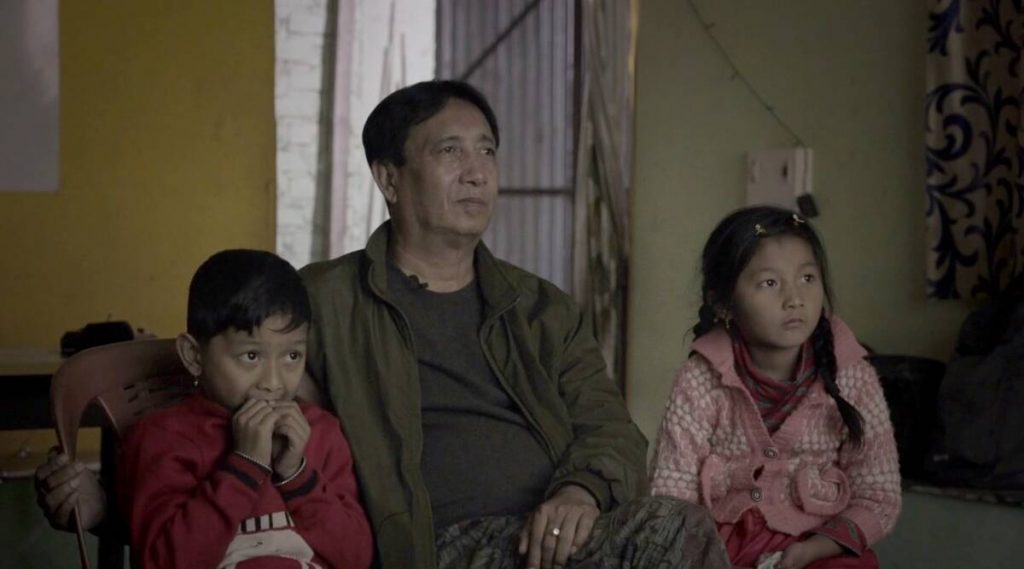Samarth Mahajan’s Borderlands (2021) explores the lives of individuals living across different border areas of India. The narratives of these people, belonging to different economic ranks, reveal just how much geographical locations help in building the foundations of social life on which democracy rests. The film pertinently examines how citizenship and nationalism help in defining the identity of an individual.
Borderlands introduces us to six characters whose ideologies and principles are shaped by the peculiarities of their respective geographical location. Deepa, who was a former staff Nurse in Pakistan, wanted to become a midwife after her 10th grade. But before she could do so, she had to migrate with her family to the Pakistani Migrant Settlement in Jodhpur, Rajasthan. In the northeastern region of India we meet Surjakanta in Imphal, whose house is filled with equipment related to filmmaking. He reminds us how the Indian government forced the King of Manipur to accede to India post-Independence. The third, Dhauli, a middle-aged woman, lives in Nargaon on the India-Bangladesh border. After getting married she shifted to India along with her husband. She continues to suffer the pang of separation from her kith and kin. At the checkpoint in Birgunj, Nepal, we come across Kavita, a differently-able young girl, working as a government official with the onus of obstructing the trafficking of young girls across the Nepal-India border. In sharp contrast to Kavita, we meet a teenage girl, Noor, who has been a victim of child trafficking from Bangladesh and now lives in the safe confinement of a Shelter Home in Kolkata. And finally, Rekha Mahajan, the filmmaker’s mother, is a middle-class housewife who lives in Dinanagar in Punjab. She is so engrossed with her family life that the thought of visiting the Wagah Border and witnessing the military parade has never occurred to her until persuaded by Samarth as a part of the film.
Mahajan examines how the ideas of home and belonging to communities around us are formed. The characters of the documentary, through their connections with culture, region and language, individually shape their national identities. They have adjusted themselves within the practicality of their situation in society yet transcending beyond political boundaries. This approach by the filmmaker steers away from how India’s policies have fueled border conflicts with devastating effects. Mahajan has structured the documentary around the lives of these characters, who are (surprisingly) not vocal about their political leanings. Surjakanta, though having experienced difficulty in the past with the state machinery regarding the content of his films, does not comment at all on the present burning political issues in Manipur.
What gives Borderlands its strength is how Mahajan remains completely objective in his approach. He captures the sublimity of his characters marked with a deliberate rejection of formal interviews in favour of conversation. He explores the mind of these individuals to extract relevant pieces of information that forms the bedrock of the documentary’s journey. For Deepa and Noor, Indian society offers them the freedom to survive as free-spirited souls. In Pakistan, there are umpteen restrictions on the movement of women but in India, Deepa does not have to counter such constraints. Conversely, Noor not only utilizes her freedom to wear hot pants in public but is also able to enjoy a relationship with her same-sex partner. Yet she finds her motherland prettier than India. Rekha had to quit her job as a teacher to get married. She has since been going through her daily chores for years, her existence caged within the metaphorical borders of her home. Surjakanta uses film to express his political ideologies as for him, cinema is a mirror of society. He has taught the art of filmmaking to his students and built a community of filmmakers so they could tell their stories. Kavita feels that while borders should make people secure, the Nepal-India line makes people feel unsafe due to the transgressing business of human trafficking. Dhauli notes that the fence erected to divide India and Bangladesh could not divide the hearts of people on either side. Her emotional assertion shapes into a reality for a day – that of ‘Milan Bazaar’. This is a day when citizens from both sides assemble near the barbed wire posts of the border region to catch a glimpse of one another. A bamboo pole is used to exchange affections in the form of fruits, clothes etc between Dhauli and her family members, thereby diminishing their distances momentarily.
The film is strong technically. The fluidity of Omkar Divekar’s camera skillfully surveys the different spaces and individual reactions that helps in greatly augmenting the narrative. The seamless flow of images through the editing by Anadi Athaley evokes genuine emotions while the evocative sound design helps in bringing alive the entire ambience of the film. The song performed by the Survivor Girl Ukulele Band blends melodiously with the hopeful vision delineated by the filmmaker.
Overall, Borderlands is an illuminating exposition of a socially relevant concern handled with a sensitive humanistic approach. However, the inclusion of a political subjectivity into the narratives of its characters could have added more layering, complexity and nuance to the film. It remains a pertinent piece of filmmaking nevertheless.
The film won the National Award for Best Editing for Athaley in the Non-Feature Films category at the recently announced 68th National Awards.
Bengali, Manipuri, Nepali, Punjabi, Hindi, Documentary


